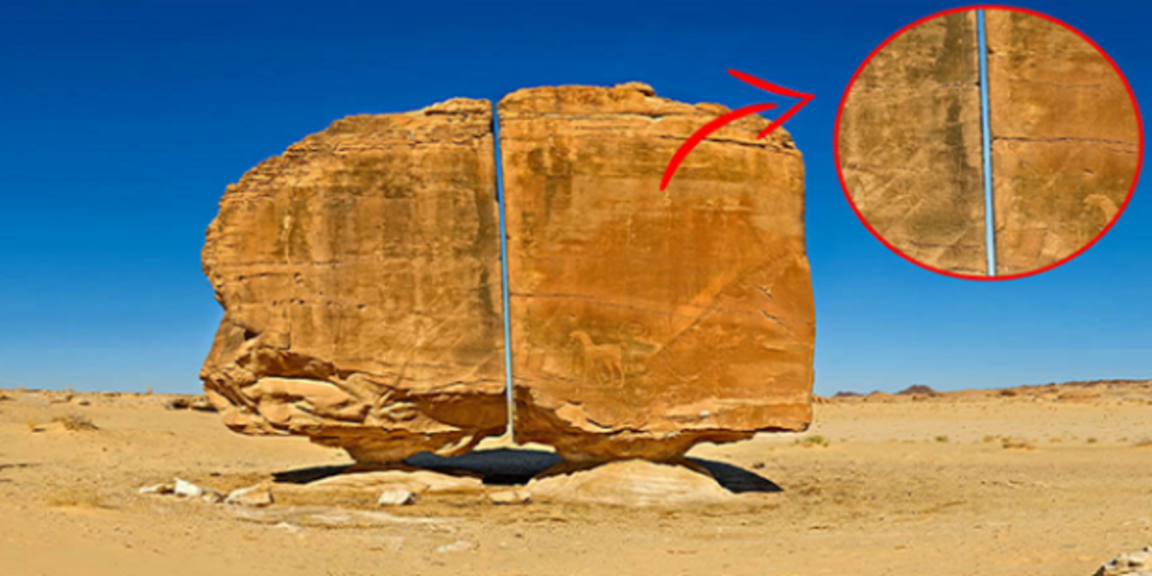“AL-NASLAA”: The rock in perfect balance
Located in the Tamya Oasis in Saudi Arabia, it is a megalith called AlNaslaa. It is perfectly divided in half and has curious symbols portrayed on its surface.
If that wasn’t enough, the two rocks split in half with laser precision have managed to stand for centuries, and somehow they are perfectly balanced.
The stones were split in half with laser-like precision as if some advanced intelligence had done such an impressive job.
Imagine walking through the desert, exploring the unknown and you come across a huge standing stone, split in half by a perfect line.
What would be the first thing that comes to your mind?
The Al-Naslaa stone(s) is truly a GIANT mystery. Located in Saudi Arabia, the two halved stones have created confusion among experts since their discovery.
Considered one of the most photogenic petroglyphs on the surface of the planet, the rock is split in half with extreme precision.
However, according to experts, the laser-like precision was NOT artificially created.
This incredible ancient stone structure attracts thousands of tourists every year who come to Al-Naslaa, which has given rise to countless theories trying to explain its origin.

The rock is in perfect equilibrium, supported by two bases. Everything suggests that at some point it must have been worked by extremely precise tools, some have even ventured and said laser-type tools.
Each part of the split stone has a smaller rock or buffer at the bottom, preventing it from touching the ground.
Archaeological discoveries show that in ancient times the region where the rock is found was inhabited. In fact, it is one of the most photogenic petroglyphs in the area.
The megalith was discovered by Charles Huver in 1883, and since its discovery, it has been the subject of debate among experts who have divided opinions when it comes to its origin.
In 2010, SCTH – the Saudi Commission for Tourism and National Heritage announced the discovery of a rock near Tayma with a hieroglyphic inscription of Pharaoh Ramses III. Based on this discovery, researchers have hypothesized that Tayma was part of an important land route between the Red Sea coast of the Arabian Peninsula and the Arabian Peninsula.
Red Sea coast of the Arabian Peninsula and the Nile Valley. Recent archaeological discoveries show that Tayma has been inhabited since the Bronze Age.




